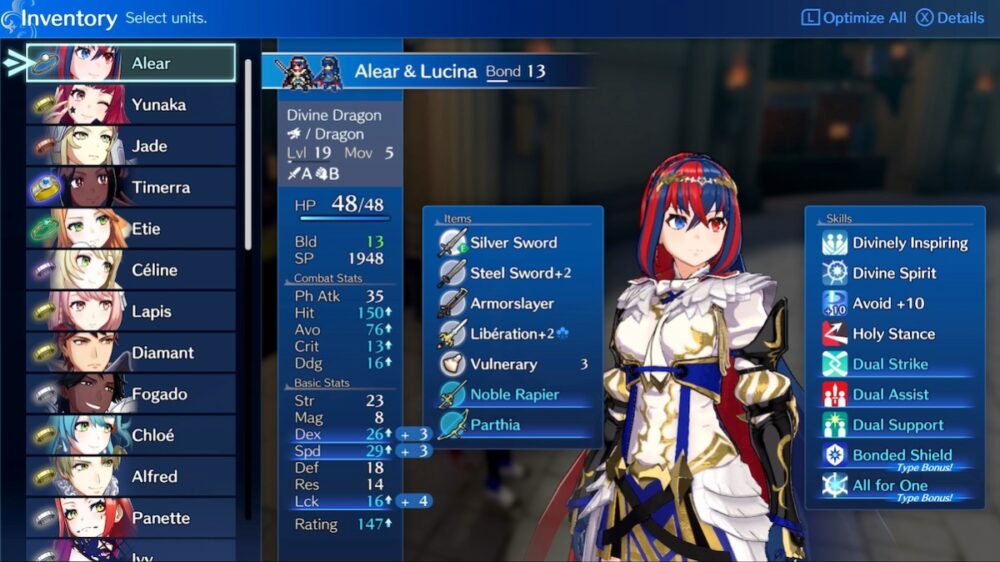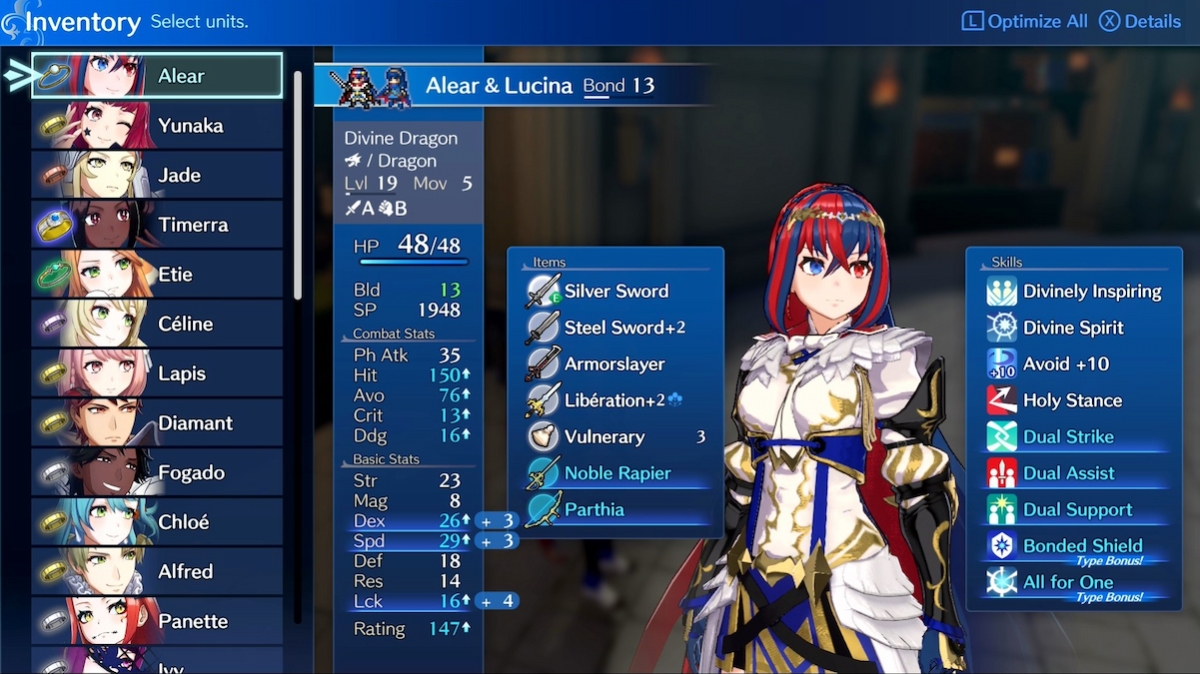One of the first things you encounter in Fire Emblem Engage is a cast of characters to control in battle. But with Fire Emblem being an RPG however, these characters have numbers littered around the screen which they hope you understand. If you don’t understand those numbers however, fear no more, because this is the guide you need. Here is every Fire Emblem Engage character stat, explained.
Fire Emblem Engage character stats
Level and movement
Starting from the top of Fire Emblem Engage’s character stat screen, we have Level and Movement. The first one is pretty self explanatory, and Movement is a metric of how far you can move on the grid in battle. The higher that number, the further you can move towards (or away) from enemies.
Proficiencies
Below that is the next batch of stats, which are the Proficiencies. These dictate which weapons you can use in the class you’ve chosen for the character. If you would like a guide on how to improve these Proficiencies, you can find that here.
Health, build, and skill points
Down below are three more stats. The first is the Health stat (HP), or, basically, the amount of health points you have. It’s followed by the Build stat (Bld), which used to be Constitution in previous games. It dictates the amount of weapon weight you can carry before it negatively affects your character stats. Underneath the Build stat is Skill Points (SP), which are for inheriting skills from the various Emblems via the Ring Chamber.
Combat Stats
Onto combat stats. First is Physical Attack (Ph Atk), which is the unit’s attack power when using a physical weapon. Below that is Hit, which determines the odds of landing an attack in Fire Emblem Engage. Then we have Avoid (Avo), which dictates the odds of evading an attack. Beneath that is Critical (Crit), which decides the chances of you landing a critical hit. Finally we have is Dodge (Ddg), this increases the chances of avoiding a critical hit. With all these stats, the higher they are, the better.
Strength, magic, dexterity, and speed (Basic Stats)
Following Combat Stats, we have the Basic Stats section. The first one you’ll see is Strength (Str), and this affects the damage a unit deals with physical attacks. Second is Magic (Mag), which is the same as strength but for magical attacks. Then there is Dexterity (Dex), this determines your hit rate and frequency of critical hits.
Next is speed, this contributes to your avoid stat. This stat also allows you to attack more than once if your speed is +5 on the opponent.
Defense, resistance, and luck (Basic Stats)
Moving on we have stats that revolve around survivability. Defense (Def) reduces damage from physical attacks. Then it’s Resistance (Res), this is the same as defense but for magical attacks. Finally we have Luck (Lck). This character stat is said to have various effects, which include lowering risk of enemy critical hits. Due to the description being vague, it may have other effects too. In most Fire Emblem games, it raises Hit and Critical Hit rate by +1 for every point of luck.
In Fire Emblem Engage, your character stats are located inside the inventory menu. From here you can actually press the ‘X button’ and hover over every character stat. So if you ever need a refresher, there’s a brief explanation in the menus for you.
Fire Emblem Engage can be purchased on the Nintendo Store.
- SEO Powered Content & PR Distribution. Get Amplified Today.
- Platoblockchain. Web3 Metaverse Intelligence. Knowledge Amplified. Access Here.
- Source: https://www.pcinvasion.com/all-character-stats-in-fire-emblem-engage-explained/
- All
- amount
- around
- as
- Battle
- because
- before
- Better
- build
- chances
- characters
- combat
- Control
- critical
- damage
- Deals
- Defense
- Dex
- Dodge
- emblem
- engage
- EVER
- Every
- explained
- explanation
- Explanatory
- Fear
- Finally
- Fire
- Fire Emblem
- Fire Emblem Engage
- First
- further
- Games
- Grid
- guide
- Health
- here
- higher
- hits
- How
- How To
- HP
- HTTPS
- improve
- INSIDE
- inventory
- IT
- LCK
- Level
- located
- Luck
- Magic
- May
- more
- move
- movement
- need
- negatively
- Nintendo
- number
- numbers
- Odds
- One
- Other
- physical
- plato
- plato data intelligence
- platodata
- platogaming
- Point
- Points
- power
- press
- pretty
- previous
- purchased
- raises
- rate
- Ring
- Risk
- RPG
- Said
- Screen
- section
- skill
- skills
- So
- speed
- stats
- strength
- The
- things
- top
- towards
- Understand
- various
- via
- zephyrnet













